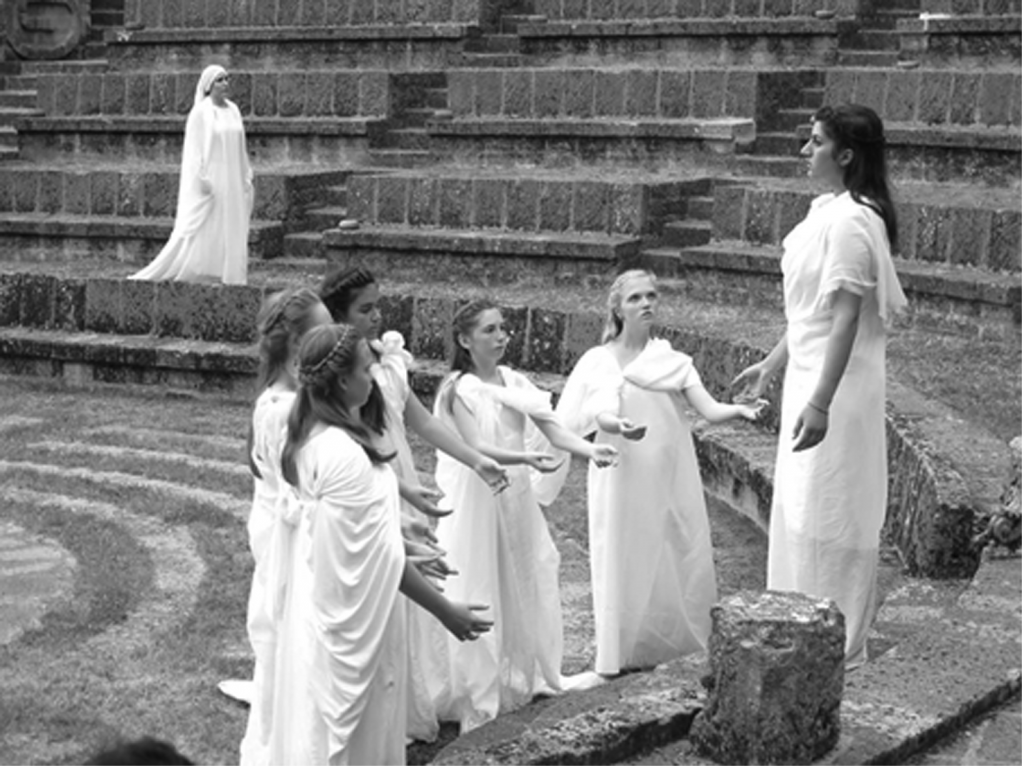There is a word in the Spanish language that has been deemed one of the most difficult to translate into English: “duende.” It loosely translates to describe the profound feeling of awe during an artful experience. Sometimes we need to reach beyond our own language to fully communicate an emotion. Maybe there aren’t enough — or perhaps too many — English words to be able to accurately explain an experience. But if I had to describe as precisely as I could my interpretation of EU music major Mary Consoli’s experience with the original Italian cantata, “Hildegard Von Bingen: Bambina Mistica” I would choose the word “duende.”
Before the lengthy audition process had begun, Mary thought, “This is too dramatic, and it hasn’t even started yet.” She found out about auditions from a friend of hers, and sent in a video to be screened for the first of four steps in the audition process. The day of the audition seemed suited for a movie: a huge snowstorm had blown in and almost ceased the adventure before it had begun. Obstacle after obstacle got in her way of auditioning, but sometimes life has a way of working out despite everything seemingly going awry. Mary got the email that she had gotten a callback while on the bus traveling with Eastern’s University Choir: “I was using my cell phone data and everything. It was so serious.” As the auditions continued, the competitors dwindled. What began almost one hundred participants waned to thirty, and finally to the ten who would perform together.
The more Mary shared, the more meaningful this whole story became to me. She received a phone call one evening while at home with her family informing her that they “saw something – some spark,” and with that, her typical Italian family celebrated in the typical Italian way: affection and emotion.
When she talked about the music she sang, Mary described it as a reverse-Gregorian chant; the songs had no key or time signature. It consisted of Latin chants as well as classical Italian. The chanting was tranquilly monophonic with no extreme dynamics. “The music was both melodically and rhythmically challenging, and Karen’s (artistic, musical, and stage director) technique was very different, very original. It was peaceful – relaxing in a natural way. Everybody seemed to have the same experience.” Mary remembered.
The rehearsal time before going to Italy was limited. The entire group met once for the first time in May, then three times in the week before they left, so they had the majority of the summer to work through the challenges of the music on their own. Once in Italy, the rehearsals increased drastically. Each day the performers rehearsed for eight to ten hours, which left them all physically and mentally exhausted. They performed in small, intimate churches, as well as twice in Assisi. One of the places was Santa Maria degli Angeli Basilica, in front of The Proziuncola, which is the cell in which Saint Francis died. “We were walking where history was made,” Mary marveled.
The ages of the performers ranged from ten to twenty-one, so Mary was the eldest of the group, and therefore got the privilege of sharing what she knew with those younger than her. Being raised Catholic and with strong Italian culture in her own life, Mary is knowledgeable about the thick, potent history of Italy. When some of the younger girls in the group weren’t aware of the importance of the places where they performed, Mary was able to share the significant stories from years ago.
When the group left Italy, they came to perform in America, for the American premiere on November 8th, just about a month ago. She described how something altered when the audience was no longer Italian-speaking. The words of the music were no longer understood, but that allowed for the music to speak even more clearly. “It was like our little secret,” Mary remembered about performing for the English-speaking audience. “We were able to bring Italian culture to America, which was such a beautiful experience. You don’t realize how surrounded you are by a culture until you are removed from it, until you go from standing on the very ruins of what Saint Francis built to standing in the front of a church in America.”
While language can create a barrier, music forms the barrier into a bridge, and allows, as “Hildegard Von Bingen: Bambina Mistica” further proved, that where there is art, there is “duende.”

